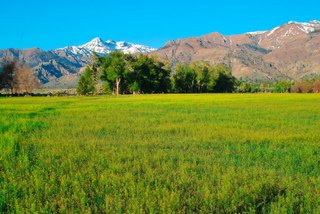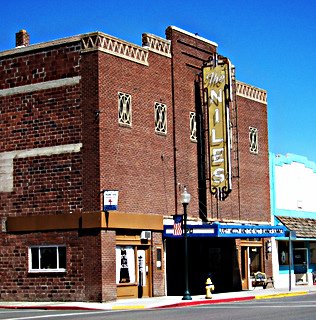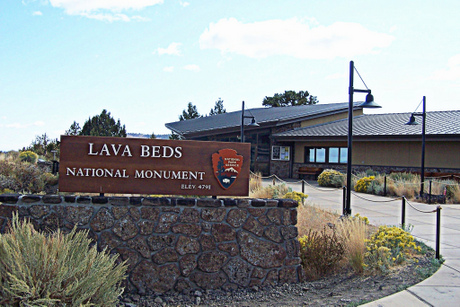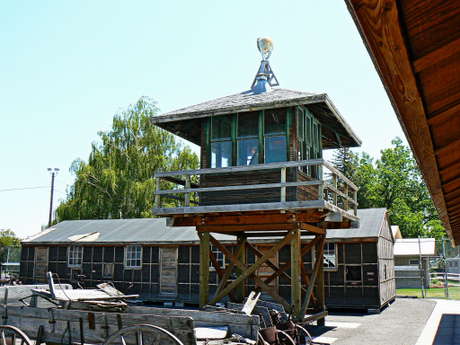Discovering Northern California
Modoc County California
Find a Taste of the Outdoors In Modoc County California
Never heard of Modoc County California? For a long time, that was the way Modocers wanted it! They love the wide-open spaces, the peace and tranquility, the beauty and the wildlife - and they wanted to keep it all to themselves.
And one can hardly blame them! With fewer than 10,000 residents (2.25 people per square mile), terrain that ranges from lava tubes and beds to forested mountains, lakes and valleys, rivers and streams, high desert, and wildlife refuges.
Modoc County California:
Alturas is the County Seat
With fewer than 2900 people, Alturas California is the only incorporated city in Modoc County - it's also the county seat.
Alturas hosts government offices for the county of Modoc, and it serves as headquarters to the Modoc National Forest, the Bureau of Land Management, and the Modoc National Wildlife Refuge.
It's a natural as a starting point when you begin to explore Modoc County.
Established in the early 1870s as Dorris Bridge, Alturas was incorporated in 1901. You'll discover several historic buildings in Alturas, such as The Niles Theater, the Niles Hotel, and the Modoc County Courthouse.
It sits along the Pit River, on the site of a former Achumawi village, boasts an Indian Casino, the Desert Rose, and hosts the Fandango Days Celebration in early July and the Alturas Balloon Fest and Migratory Bird Festival mid-September.
Head to Modoc County California
To Find the Wide Open Spaces of the West
 Warner Mountains; CC calwest
Warner Mountains; CC calwestThe slogan that Modocers seem to like most when referring to their county is, "Where the West still lives," and it's exemplified by the wide-open spaces, the ranches and farms that almost outnumber the people, the cattle that do outnumber the people, and the friendliness of the folks.
Modocers love their great outdoors and they love to share it with us, inviting us up for some hunting and fishing (both are year-round adventures), horseback riding, cattle drives, and dude ranches, RVing, camping, hiking, and wildlife viewing.
Wildlife in Modoc County runs the gamut between ground squirrels, ground game birds, raptors, migratory waterfowl, and Sandhill Cranes, to Mule Deer, Pronghorn Antelope, Rocky Mountain Elk, and bear, to wild horses and burros.
Wilderness areas and wildlife refuges abound with South Warner Wilderness, Modoc National Forest, Modoc National Wildlife Refuge, Clear Lake National Wildlife Refuge, Long Bell State Game Refuge, and the Tule Lake National Wildlife Refuge.
Modoc County California:
Lava Beds and Lava Tubes
For more than half a million years, Medicine Lake Volcano has sent copious amounts of lava out over the landscape of parts of Modoc County.
Medicine Lake is a shield volcano, which means its eruptions consist mostly of fluid lava flows like the volcanoes of Hawaii.
The result of all this volcanic activity has been massive lava beds, lava tubes and caves, hot springs, and other geothermal energy resources. Visit Lava Beds National Monument to explore and learn about - not only the area's geologic features - but its Native American history as well.
Modoc County California:
Indian Wars and Internment Camps
The Modoc Wars
Like most of the state of California and the rest of the United States as well, Modoc County does not have a praiseworthy past history with the Native American tribes who lived here before the "White Man" came.
The tumultuous relationship between settlers and the tribes came to a head during the Winter of 1872-'73 when a small band of Modoc Indians, led by Native American, Captain Jack, was besieged by a much larger force of U.S. Army soldiers.
The conflict was called the Modoc Wars, and most of the battles took place inside what is now Lava Beds National Monument. The battlefields and important sites of the war, such as Thomas Wright Battlefield, Gillum Camp and Sheepy Ridge, Captain Jack's Stronghold, are preserved to this day - visit them along with the lava caves and tubes.
Japanese Internment Camps
Part of the reproachable legacy of World War II in the United States was the arrest and imprisonment of thousands of Japanese and Japanese American citizens in what were called War Segregation or War Relocation Camps.
The largest of these, called Tule Lake Segregation Center at the time, was created in Modoc County from a former Civil Conservation Corps camp, and later became a prison for German Prisoners of War.
Later renamed Tule Lake War Relocation Center, it became a National Monument along with eight other units in Hawaii and Alaska by Presidential proclamation in December 2008. View the exhibits, pick up maps and brochures, and take a tour of the facilities.
You won't find anything remotely resembling the the crowds, traffic or noise of city life in Modoc County, but what you will find is priceless. Come back soon for more about this fascinating area.
- Things To Do in Modoc
Historic sites, outdoor activities, geologic monuments... there's plenty to do!
Please continue your exploration of what Northern California has to offer by using the Nav Bars in the left and right columns or by using the links at the bottom of the page.
Like what you're finding here at Discovering Northern California? Then please share with the Social Network of your choice.
And thanks for coming!
- Home Page
- Modoc County California
Related Articles
Shasta Cascade
Butte County
Modoc County
Shasta County
Siskiyou County
Tehama County
Trinity County
Related Pages
Hints & Tips
Beach Safety Tips
Best Kept Travel Secrets
Family Camping Tips
iPhone Travel Apps
Nude Beaches
Tide Pool Tips
Travel Sites We Love
Travel Tips
Whale Watching Tips
Wine Tasting Tips
Winter Driving Tips
Related Pages
Things To Do
Activity Village
Attractions
Beaches
Beer Lovers Delight
Burney Falls
Camping
Casa de Fruta
Day Trips
Gold Panning
Gold Rush Sites
Healdsburg
Historic Grass Valley
Lake Shasta Caverns
Lodi
Missions
Nevada City
RV Destinations
Ski Resorts
Tide Pool Tips
Travel Tips
Weekend Trips
Whale Watching
Wine Tasting
Related Pages
Free Things To Do
Free in Big Sur
Free in Chico
Free in San Francisco
Free in Sonoma
Related Pages
Insider Secrets
Best Kept Travel Secrets
Best Winter Whitewater
Boring Road? Nope
CA Admission Day
Climbing at Castle Rock
Crabbing Spots
Dream of Dreams
Fall in Eastern Sierras
Ghost Stories
Glass Beach
Great Stays, Low Pays
How to be a Valley Girl
Jade Beach
Lake Shasta Caverns
Lassen Volcanic SP
Lost Coast
Mono Lake
Moss Landing: Whales
New Clairvaux Abbey
Panning for Gold
Pygmy Forest
Mendo to Eureka
RV Destinations
SF Great Places to Eat
SF: More About Eating
SF Neighborhoods
SF Giants Baseball
Santa Cruz: Memories
Santa Cruz: Old Friends
Sonoma Cooking Class
Sonoma History
Sonoma Top Wine Stop
Tahoe: Discovery Trail
Underground Gardens
Yosemite: Family Hikes
Yosemite: High Country
YNP: Off the Beaten Path
Yosemite: Taft Point
Ziplines


